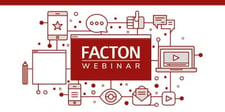Sales executives who want to win the race for orders need to be optimally prepared. The goal: The fastest offer at the best price. Today the race is decided by efficient and reliable quotation calculation. Fast, precise costing and a solid quotation are the only way to win orders in this environment. Similar to relay a race, participants are assigned individual roles based on their strengths. Smooth transfer on the baton can often decide the race. In the quotation calculation process, the relay team compromises the different departments involved in product pricing. Sales is the captain of the team and the anchor that coordinates the crew and ultimately carries the baton through those hard-fought final yards and across the finish line ahead of the competition.
Preparation phase: Calculate quotations across multiple disciplines with reliable data
Just like in any other competition, the preparation phase is key. After all, the team must be a well-oiled machine. Businesses can optimally prepare for the race for orders by visualizing interdisciplinary cost accounting structures in an enterprise-wide costing solution. A “cost expert” used to be the single source of knowledge management in the company. Today information is spread throughout the entire enterprise. In many cases different departments deliver the necessary data in different formats and using different calculation methods.
- Development supplies information on manufacturing processes.
- Purchasing contributes purchased part prices.
- Sales calculates quotation variants.
- Controlling ensures projects are profitable and calculates business cases and key ratios.
- Management approves business cases and quotation variants.
- Sales defends quotations in customer negotiations and responds to change requests.
This enterprise-wide perspective is required in order to produce dependable quotation calculations over the entire project lifecycle. However, a standardized, centrally implemented costing solution must be deployed to ensure successful collaboration independent of location and department. Product costing software with open interfaces to existing third-party systems such as PLM or ERP in the enterprise enables the automated exchange of data and makes cost-relevant information available in the application. This makes it possible to use assumptions negotiated with customers and saved in the master data management of a CRM system directly in the quotation calculation. Quotation calculation can span multiple teams. A centralized costing tool accelerates the process and removes “stumbling blocks” created by manual data collection.
The starting signal: Consistent pricing right from the start
Now when the starting signal comes in the form of an incoming RFQ, the team can quickly get to work because the costing solution gives everyone involved access to the same data, customer-specific quotations and previous negotiation results regardless of their time zone or location. This ensures that data remains consistent and speeds up response times. The required information does not need to be gathered from all of the different departments in a time-consuming, manual process. Customer change requests are implemented immediately. Instead of permanently overwriting values in a cost calculation, a new calculation is automatically created every time a modification is made. For interdepartmental collaboration this means that changes and decision bases are saved and can be traced at any time throughout the entire quotation history.
Why is it impossible for spreadsheet programs keep up? Information on changes, who was responsible for them and the reasons behind them can be lost in unstandardized procedures involving spreadsheets. The lack of transparency increases in direct proportion to the number of changes, leading to errors and preventing a comprehensive view of the quotation history.
Figure: Reasons why spreadsheets falls short in costing

Source: FACTON
Boost speed to break records: System-integrated version management
Elite runners want to beat their personal best and sales wants to deliver the fastest quotation at the best price. This requires adjusting and optimizing running techniques and offers prior to submission. Speed still increases when system-integrated version management is available. Every change prompts the system to automatically save the cost calculation as a new project. Versions are retained and saved centrally in audit-compliant format. A key feature of modern costing solutions: A built-in comparison mechanism automatically determines differences in costs between two or more versions and highlights these. This completely eliminates the need for tedious, error-prone, manually prepared comparison scenarios.
Overcome obstacles: Easily control multiple variants with the right functions
Every race has its challenges. Obstacles arise when multiple variants need to be calculated, for instance. Cost experts are familiar with the problem: Work is complex and often there simply is not enough time. The result: Quotations are inaccurate and prone to errors.
Software-based costing solutions simplify work. For example, product variants are generated from a maximum bill of materials and can be supplemented with individual customer specifications if needed. The many separate work steps are reduced when frequently used information such as prices, quantities and attributes can be edited across multiple projects using the batch data editor, for instance.
A standardized calculation line scheme makes modified values directly visible in the comparison. Variants can help visualize and analyze the impact of potential change requests or alternative manufacturing technologies as they relate to costs. Variants can be presented side-by-side and they can be individually hidden or shown. If necessary, updates can be shown only for visual variants. Cost experts can easily compare new options with original variants and quickly and reliably optimize costs.
Lear more about how you can secure your competitive advantage through a precise quotation calculation in our webinar on demand "Quotation Costing: Challenges and Potentials" .
The final sprint: Automatically transfer your own calculation to the quotation template
A flawless finish is frequently stymied by the need to manually transfer data from the internal calculation to an external quotation template while under extreme deadline pressure. Transposed digits, missing decimal points, mixed up signs – all of the classic mistakes made when manually transferring data are even more likely to occur under time pressure.
When internal calculation data is transferred with the touch of a button, fast submission of a complete, accurate proposal to the customer is guaranteed. The entire data transfer work step is automated and frees up capacities for value-generating work: Calculating, analyzing and simulating costs.
In a neck-and-neck race to the finish, the ability to confidently defend pricing can often give businesses the hair’s breadth they need to win the race. And costing software enables them to quickly and plausibly explain every step of the quotation calculation.
Win: With quickly calculated, solid quotations
Companies can win the race for the best quotation if they are able to quickly calculate quotations based on solid and reliable data. They are not only the first to cross the finish line and win the order, they still have enough energy for future sprints. In short: They have determined whether the project will be profitable for them in the long run.
Simulations help monitor the structure and history of costs from the start of production (SOP) all the way to the end of investment (EOI). Dynamic, software-based profitability calculation increases the reliability of the results. The reason is simple: Individual calculations for multiple production years are automatically compiled and analyzed. An overview is available at the touch of a button and can include material price increases, inflation or price deflation effects across the entire production period. At the same time, net present value growth is visualized using central key performance indicators (KPIs). For example, if companies show a profit in production quantities at the start of production, periodically decreasing production quantities and increasing material and manufacturing costs will reverse this over the project lifetime, resulting in a loss and ultimately leading to a negative profit situation for the entire project.
Competitive analysis: Best performance results with the touch of a button
Enterprises that prepare their quotation calculation with a product costing software solution calculate quickly and reliably across multiple teams, enter the race with consistent values, use system-integrated functions for fast cost optimization and can ensure at any time during the quotation process that their project will remain profitable. In other words: They take advantage of ideal conditions, winning the race for orders with the best possible offer.
Read more about the functionalities of EPC solutions




